By Dan Weisz
Another of the very unusual winter visitors we have in Tucson is the Bufflehead Duck. Buffleheads spend their nesting season in wooded lakes and ponds within the boreal forest of southern Alaska and Canada. They winter in most of the United States and further south. Buffleheads are easy to spot on ponds because of their unique color combination. From afar, they have a jet black forehead, neck and back contrasting with snow white sides and the back of their head.
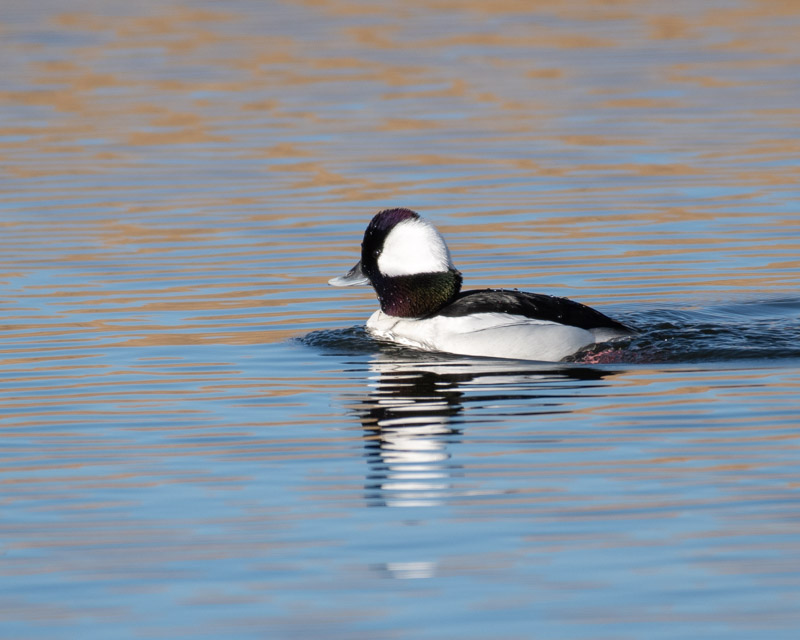
But if they turn and the sunlight hits their feathers just right, the dark feathers glow with color. The iridescent green and purple head and neck is just stunning, and the light blue/gray bill adds a nice touch. Buffleheads are very small ducks but their looks definitely make up for their diminutive size! Here is a nice Birdnote story on wintering Buffleheads: https://www.birdnote.org/listen/shows/buffleheads-winter
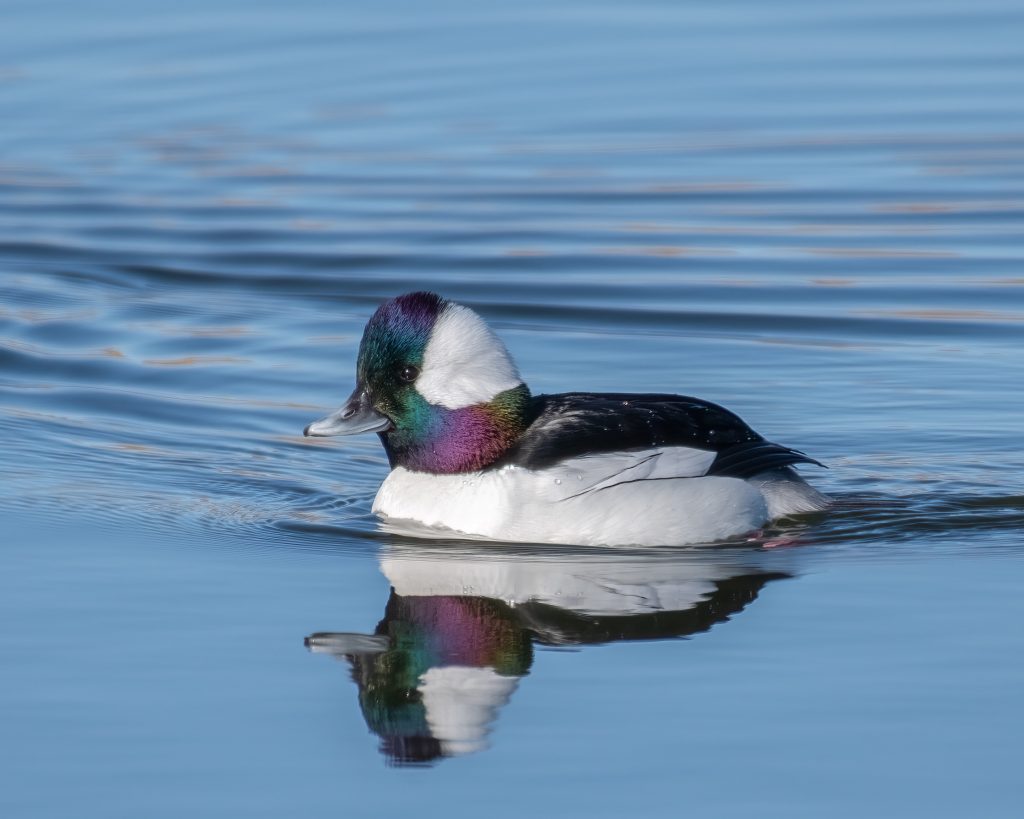
As with many bird species, the males are much brighter and more colorful than the females are. It is thought that this difference, called sexual dimorphism, is nature’s way of keeping the hens safe while they are nesting. The female below is more mottled gray and black than the male, with an oblong white cheek patch. That cheek patch gives her a little bit of a special look!
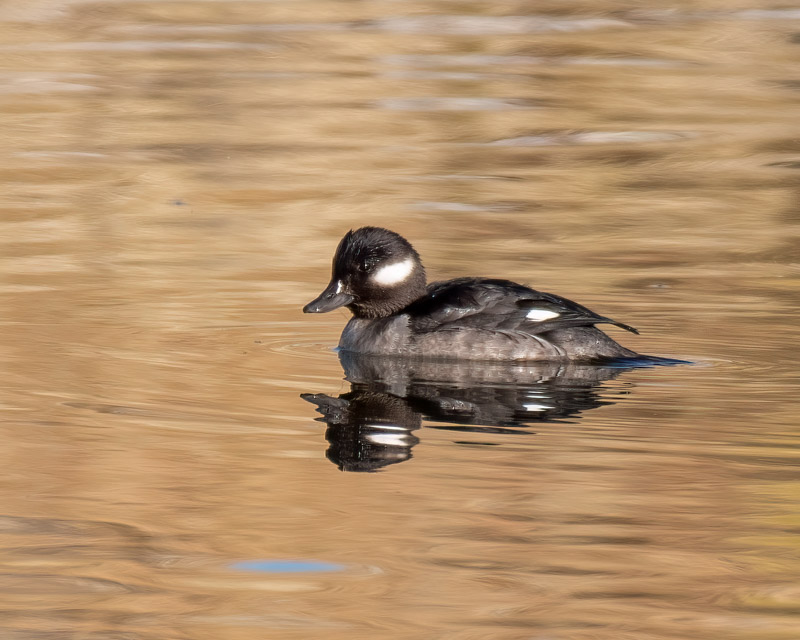
Buffleheads are named for their large heads. Their scientific name, Bucephala albeola, describes them well. In Greek, Bucephala means “bull or large headed” while albeola comes from the Latin word for “white”. Bison have large heads, and so “buffalo head” became bufflehead. While this drake (male) duck below preens, it turns on its side and shows off the very pink legs, another color highlight.
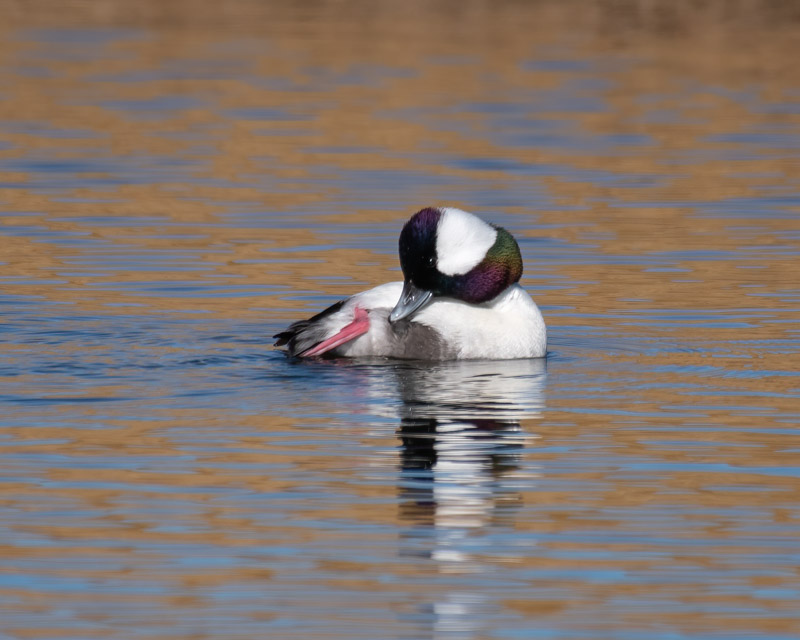
As all birds do, the Bufflehead preens every day. I like the shot below as it shows each of the wing feathers while the head fairly glows from behind them. To learn more about Buffleheads, Birdnote has another good piece: https://www.birdnote.org/listen/shows/bufflehead-return
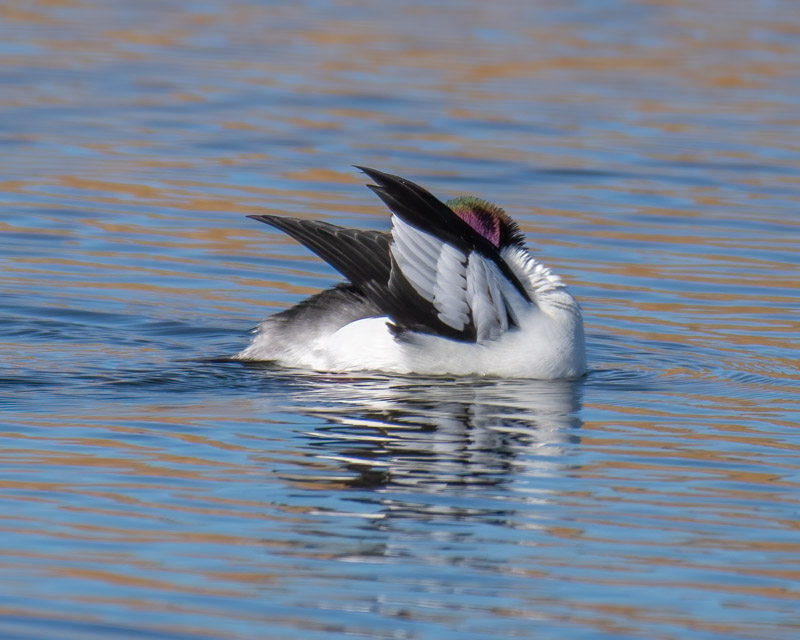
At one point the Bufflehead swam right towards us. He looked from side to side as if he was showing off. You can see his trail through the water behind him as he curved towards us.
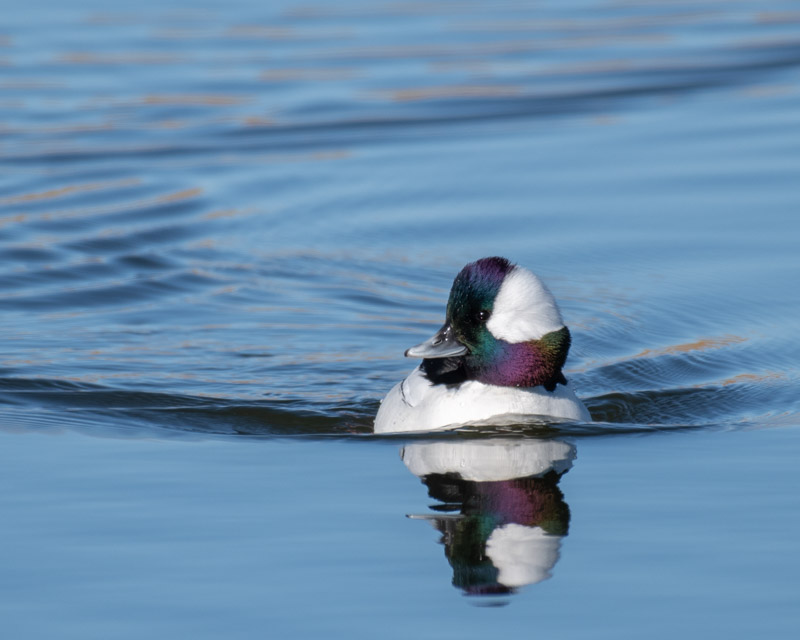
Bufflehead ducks are diving ducks. They dive to find their food underwater and are extremely active ducks, diving over and over again with just a little time to rest on the surface before feeding again. Here, the duck begins to rear up for its next dive.
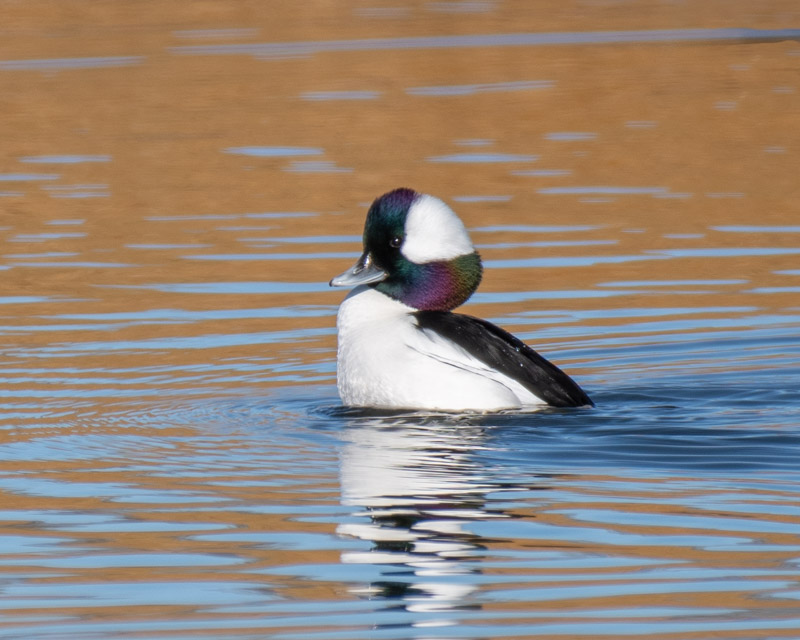
The duck leaps out of the water at the start of each dive. His tail pushes down into the water and you can see the trough behind him as a result.
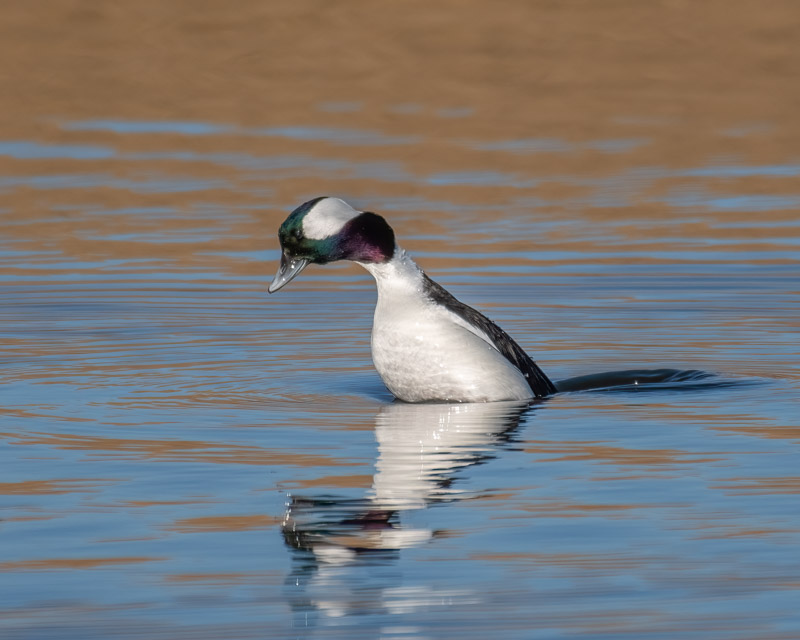
With the dive, the Bufflehead leaps above the water and then dives deeply into the pond. Notice where his feet and legs are. In diving ducks, the feet are set very far back to aid in propulsion underwater. It makes it harder for those ducks to walk on land but it helps the duck to be a powerful swimmer.
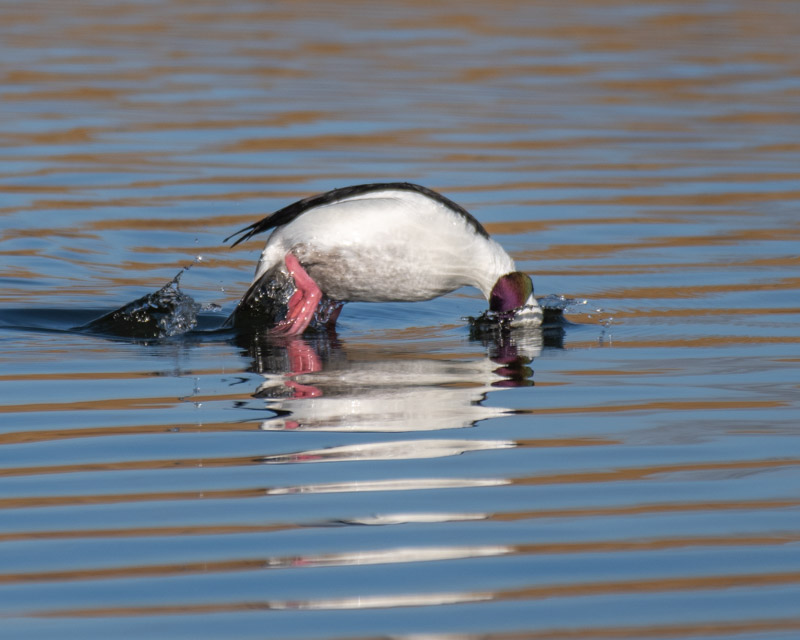
And then the last thing to see is the tail as the duck heads straight down in search of food. In some of these pictures, the water looks golden. In these shots, that color comes from the dry grasses and bushes at the edge of the pond whose color is reflected in the water. In the “golden” photos, the duck is close to the far side of the pond.
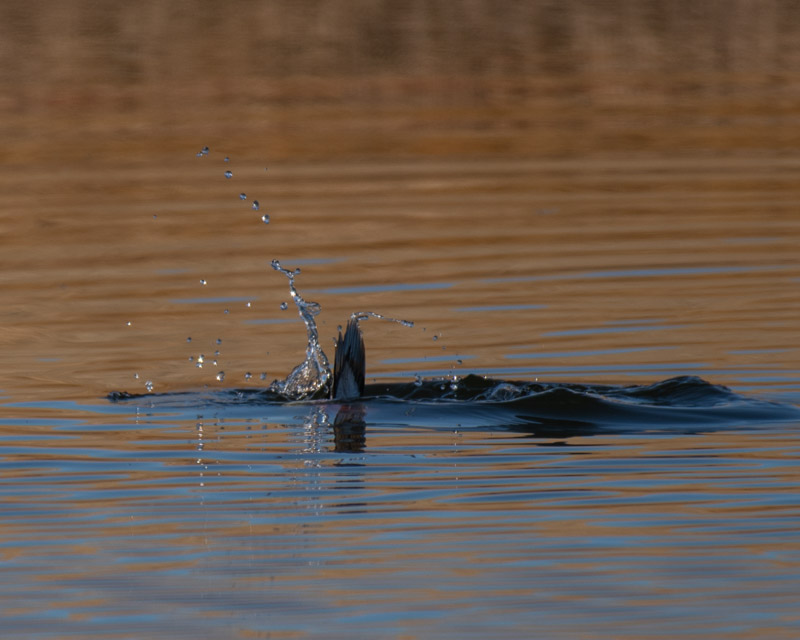
Buffleheads feed constantly, rapidly disappearing underwater and then popping back up. They spend nearly half of their time underwater. Besides preening, ducks will occasionally also rise out of the water to flap their wings. Outside of breeding behavior, this is just a way for the duck to stretch.
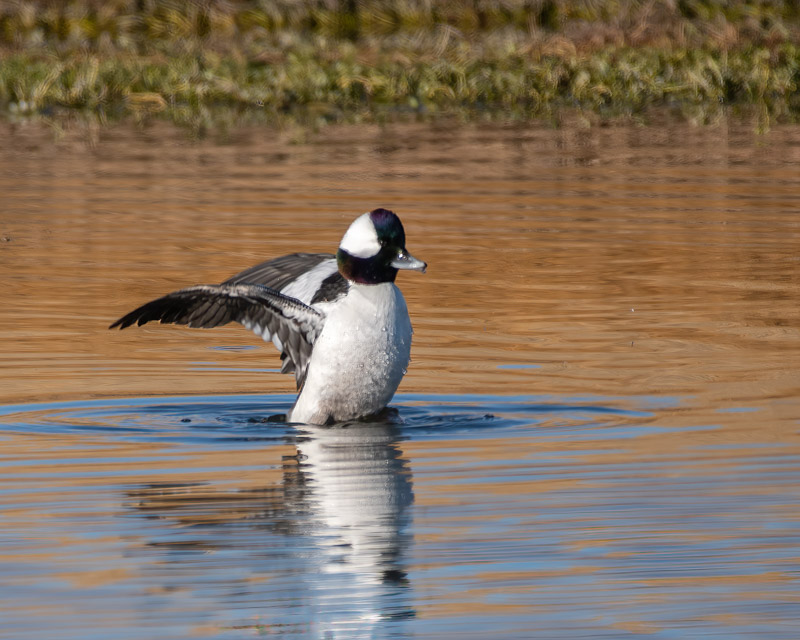
And with his feathers all in place and a slightly full belly, it’s time to just strut and show off his good looks again.
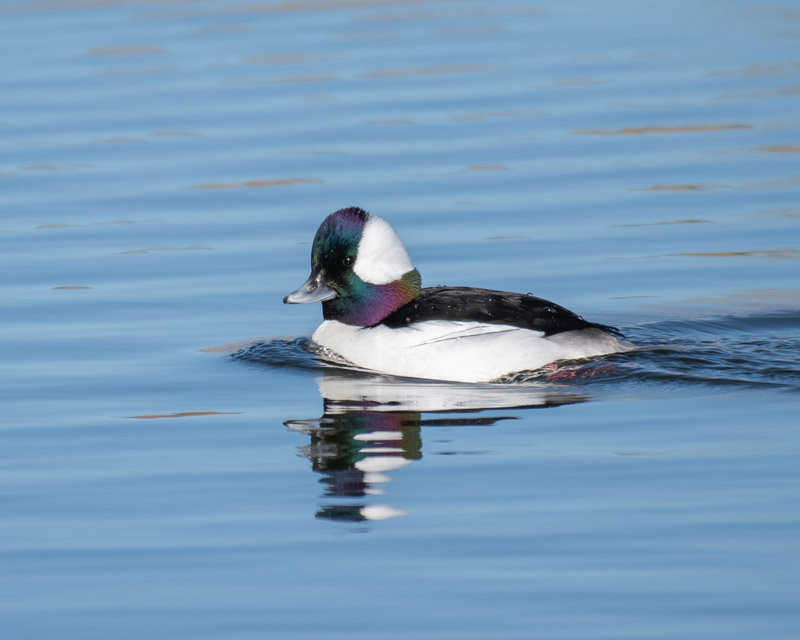
And if you are interested in learning a little bit more about Buffleheads, Audubon has a short piece called “Go Find Yourself a Bufflehead”.
https://www.audubon.org/news/birdist-rule-106-go-find-yourself-bufflehead
